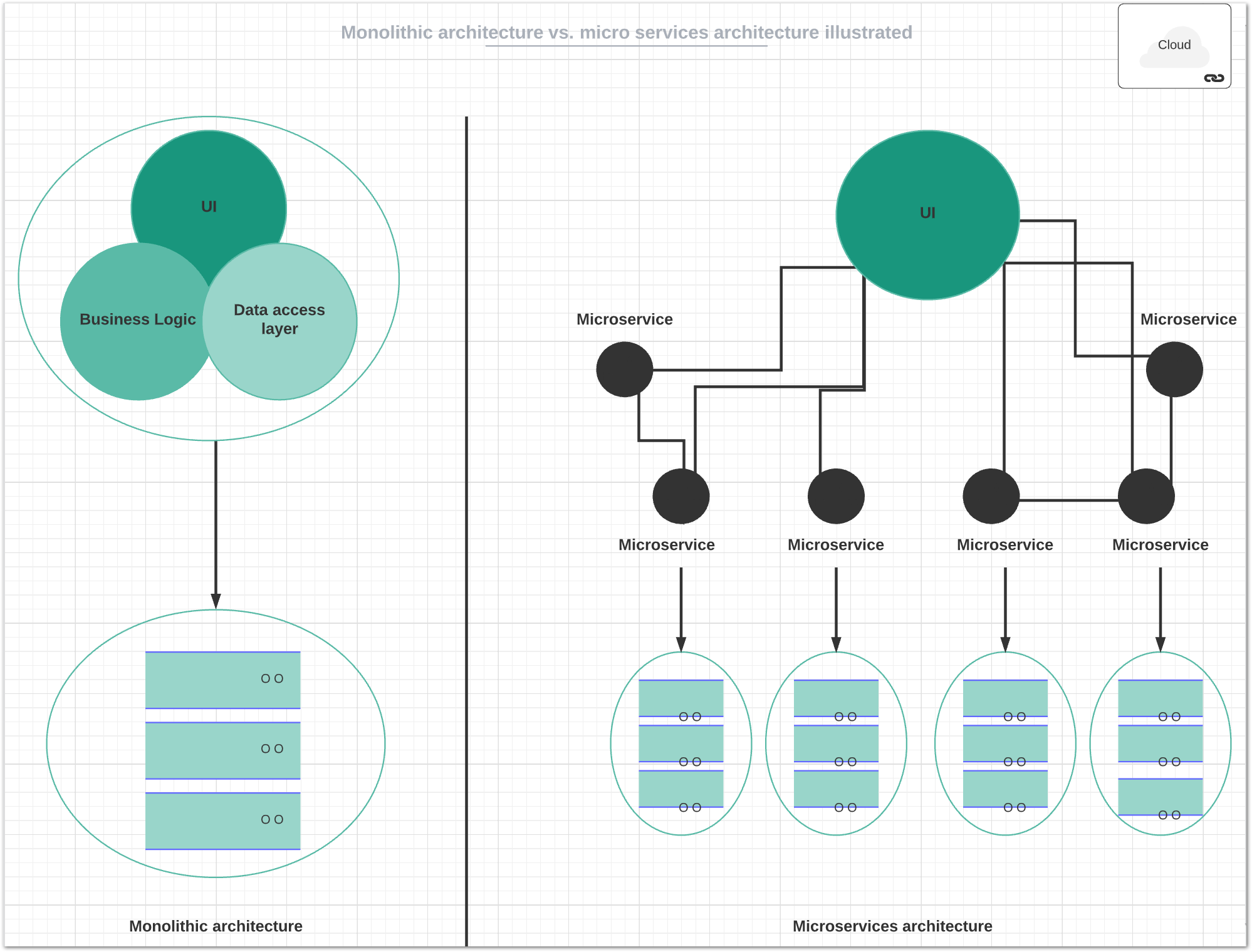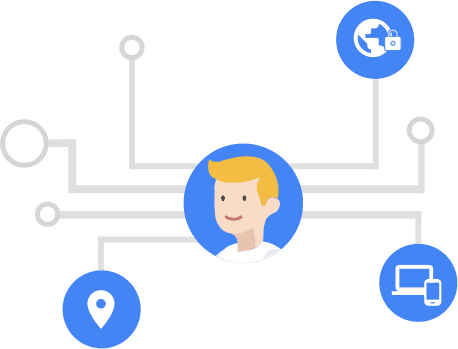Guide to cloud native
Cloud-native is a modern way of organizing technology architecture and service delivery to fuel innovation and improve organisational productivity. The benefits of cloud native approach for organisations are evident and at the very core of digital transformation and value creation. We will help you unleash the potential of cloud native development and technologies for your organisation.

What are the key benefits of cloud native development?
Cloud native development and applications are an integral part of a businesses cloud transformation and organizational change. Cloud-native key benefits include agility and velocity, which are required in today’s fast paced competitive environment, as well as flexibility in terms of technological and vendor choices, which reduce costs and risks of potential vendor lock-ins. Testing and deploying services in a cloud based environment is continuous, reliable and efficient thanks to loosely coupled architecture and improved ways of working called devops.
We support businesses in laying the foundation for agility and innovation by re-architecting enterprise architectures to support business objectives and deliver growth. Our approach to cloud native development goes beyond cloud-migration - we are certified experts in both business and technology with a cloud platform and vendor agnostic approach.

How does cloud native architecture differ from monolithic architecture?
Cloud native architecture is often contrasted with a traditional monolithic architecture, which is the traditional model for the design and development of software applications. Technically speaking, monolithic architecture is “tightly coupled” as opposed to “loosely coupled” as is the case with modular and cloud based architecture.
Cloud native architecture consists of separate modules, most often microservices, that can be changed and updated without affecting the entire program or system, thereby offering benefits in terms of agility, reliability and scalability. Cloud based architecture, being modular in nature, also tends to lead to improved organizational and technical efficiency as multiple teams do not have to coordinate the code changes in a centralized system nor are development teams restricted to only a few programming languages as in monolithic architecture. Simplified illustration of the differences between monolithic and microservices architecture can be seen below.

What are the most common cloud native technologies and applications?
Cloud native technology is an umbrella term for containers, microservices, infrastructure, APIs and other technical means which enable organizations to run applications in the cloud. A core aspect of "cloud native" technologies and design patterns is their tendency to be loosely coupled, thereby enabling the the scalability of the underlying infrastructure. However, not all loosely coupled architectures are inherently cloud native. Cloud native technology may be deployed from private cloud, hybrid-cloud or public-cloud depending on the business needs and technical requirements.
Read more about cloud adoption trends in organizations ->
The underlying characteristics of cloud technologies are speed and agility and some of the specific technologies to cater for these characteristics include cloud computing platforms like Kubernetes, AWS, Microsoft Azure and Google Cloud Platform. Kubernetes is more of cloud service orchestration software for container control, which helps to manage and automate microservices. While microservices are an integral component of cloud native development, a large number of microservices requires automation also in terms of service orchestration. Data, AI and analytics needs coupled with Cloud data warehousing also add complexity to the cloud technology space and companies increasingly need guidance in enterprise solution architecture and cloud strategy and cloud transformation.
Cloud-native applications, similarly as cloud native technologies, are difficult to define exhaustively and as such they refer to any program that is designed for a cloud computing environment and uses a microservices architecture. From an organizational and business point of view, short application life cycles, time-to-market for features and services and reliability are the primary key benefits of cloud applications. Cloud automation is a must if companies are to succeed in the complexity of cloud solutions.
Getting started with cloud native
It’s no secret that adopting cloud native architecture and moving from monolithic architecture to microservices often offers significant benefits whether that’s cost savings, productivity or innovation capabilities. Microservices business benefits are generally the greatest for applications that can scale horizontally. Horizontal scaling refers to handling change in usage demand by either adding or removing duplicates of a service, as opposed to vertical scaling which refers to adding or removing additional computation resources to a single service. Companies need to deliver value faster than ever and cloud native development is one of the organisational cornerstones to make this a reality.
What companies considering cloud native or cloud transformation need to acknowledge is the fact that cloud-based methods and technologies are radically different from traditional software development. This cultural paradigm shift is called DevOps, which often introduces significant changes to IT organisation structure and management philosophy. We help organisations to overcome organisational cloud transformation challenges by offering and implementing maturity assessments in addition to technical and business competence. Our cloud experts have left a real lasting business impact to dozens of large global organisations - get in touch below to find out more!
Horizontal scaling can be done without any impact to running services, and can scale theoretically to any demand. Vertical scaling often has down time associated with it as new resources are added and removed, and there is a physical upper limit to how many resources can be added to a service
Get in touch
Wherever you are on your digital journey, our services and experts can help you along the way. Let's get talking!











